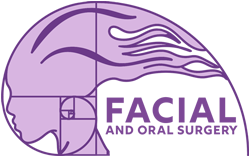
Obstructive sleep apnoea (OSA) is characterized by episodes of complete or partial collapse of the posterior airway space (PAS), with an associated decrease in oxygen saturation and arousal from sleep. This lead to regular interrupted sleep, impact on quality of life and increase the risk of developing certain medical conditions, such as hypertension, atrial fibrillation, stroke, heart attack and type 2 diabetes.
Research has shown that an individual who has been deprived of sleep because of OSA may be up to x12 more likely to be involved in a car accident. If you’re diagnosed with OSA, it may mean your ability to drive is affected and it is your legal obligation to inform the Driver and Vehicle Licensing Agency (DVLA). Driving can resume once symptoms are controlled.
It is critical to ensure OSA is distinguished from other causes of sleep apnoea (ie. medical, neurological) as treatment is different.
There are a variety of treatment options for OSA:
• Lifestyle changes (eg. Losing excess weight, cutting down on alcohol and sleeping on your side), avoiding sleeping tablets and sedatives.
• Continuous Positive Airway Pressure (CPAP) device which prevent your airway closing while you sleep by delivering a continuous supply of compressed air through a mask. This is available on NHS hence see your GP initially to be assessed for OSA first.
• Mandibular advancement device (MAD): Wearing this gum shield-like device which fits around your jaw, holding your jaw and tongue in a forward position, acts to increase the PAS. This can be provided if you are unable to tolerate CPAP. Schedule a consultation.
• Surgery: This is an option suitable for a select group of patients and is usually the last option when the above interventions have failed. Schedule a consultation for evaluation of your suitability.
What are the symptoms of OSA?
The symptoms of OSA are often first spotted by a partner, friend or family member who notices problems while you sleep. Signs of OSA in someone sleeping can include:
• loud snoring
• noisy and laboured breathing
• repeated short periods when breathing is interrupted by gasping or snorting
During an episode, the lack of oxygen triggers your brain to pull out of deep sleep so your airway re-opens and you can breathe normally. These repeated sleep interruptions can make you feel very tired during the day. You will usually have no memory of your interrupted breathing so you may be unaware you have a problem.
What are apnoea and hypopnoea?
These are two types of breathing interruption characteristic of OSA:
• Apnoea- where the muscles and soft tissues in the throat relax and collapse sufficiently to cause a total blockage of the airway for 10 seconds or more.
• Hypopnoea- a partial blockage of the airway that results in air flow reduction of greater than 50% for 10 seconds or more.
OSA sufferers may experience repeated episodes of apnoea and hypopnoea throughout the night. The severity depends on the number of episodes/ frequency of these events and range from mild, moderate to severe, measured by the ‘Apnoea Hypopnoea Index (AHI)’.
• Mild: AHI= 5-14 episodes an hour
• Moderate: AHI= 15-30 episodes an hour
• Severe: AHI= >30 episodes an hour
When to seek medical advice?
If you are displaying signs of OSA, take the “Epworth Sleepiness Scale” (ESS) test and also the “STOP-BANG” questionnaire, as not everyone with OSA is sleepy.
ESS score of 16-24 means you’re excessively sleepy and need to seek medical attention. A score of 6-10 is considered normal during the daytime.
STOP-BANG score 5-8 is high risk of OSA.
See your GP if you think you might have OSA, based on these scores. They can check for other possible reasons for your symptoms (eg. Hypothyroidism- underactive thyroid gland), and can arrange for an assessment of your sleep, called a polysomnogram, through a local sleep service centre (currently at Southampton, Salisbury, Blandford or Dorchester).
The time to see a sub-specialist surgeon like Miss. Lwin, is when you have done all the above and have done all you can with lifestyle changes, and unable to tolerate CPAP overnight despite changes in pressures and different mask-fitting adjustments.
How is OSA diagnosed?
Initially from observed signs and symptoms should prompt you to complete ‘Epworth Sleepiness Scale’ (ESS) and ‘STOP-BANG’ questionnaires to determine your risk of having a sleep disorder.
Your GP will refer you to a local sleep service centre for “Sleep Studies” used to diagnosed OSA. They include:
• Oximetry: Measures the oxygen level in your blood, usually done at home. You wear a small sensor device called a pulse oximeter on your finger or earlobe or your wrist.
• Polysomnography or PSG: This is the ‘gold standard’ test and is an overnight study, done in hospital room. It also assesses your heart and lung function by measuring airflow, chest movements and oxygen levels.
What are the treatments for OSA?
There are a variety of treatment options for OSA:
• Lifestyle changes (eg. Losing excess weight, cutting down on alcohol and sleeping on your side), avoiding sleeping tablets and sedatives.
• Continuous Positive Airway Pressure (CPAP) device which prevent your airway closing while you sleep by delivering a continuous supply of compressed air through a mask. This is available on NHS hence see your GP initially to be assessed for OSA first.
• Mandibular advancement device (MAD): Wearing this gum shield-like device which fits around your teeth, holding your jaw and tongue in a forward position, acts to increase the PAS. This can be provided for suitable individuals, if you are unable to tolerate CPAP. Schedule a consultation.

• Surgery: This is an option suitable for a select group of patients and is usually the last option when the above interventions have failed. Schedule a consultation for evaluation of your suitability.
